SHANGRI-LA AT THE SHARD by guest blogger Fiona Duncan
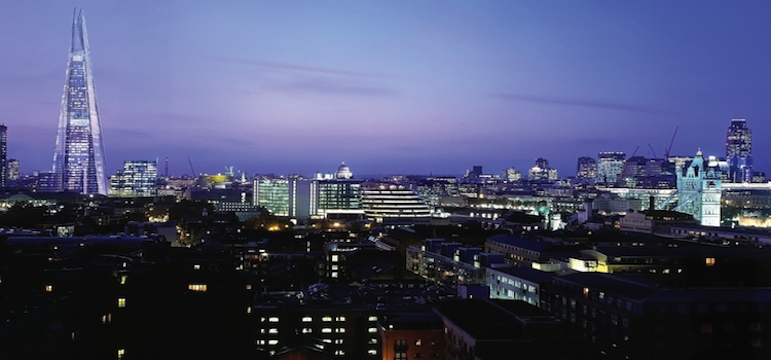 First of all, the view. Don’t believe those who tell you it’s not worth staying at the Shangri-La at the Shard (what a mouthful) when you can simply visit the public viewing galleries on floors 68, 69 and 72 of western Europe’s tallest building. They are wrong. First, the views are much less distant and more comprehensible from the hotel, occupying floors 34 to 52; second, you have the leisure – all day and all night if you want – to take them in.
First of all, the view. Don’t believe those who tell you it’s not worth staying at the Shangri-La at the Shard (what a mouthful) when you can simply visit the public viewing galleries on floors 68, 69 and 72 of western Europe’s tallest building. They are wrong. First, the views are much less distant and more comprehensible from the hotel, occupying floors 34 to 52; second, you have the leisure – all day and all night if you want – to take them in. 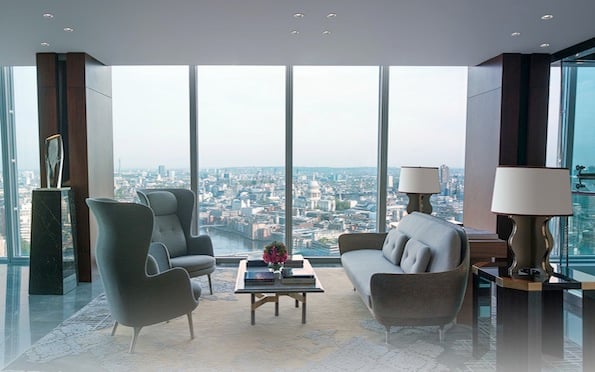 It takes just 26 seconds to reach the 35th floor from the hotel’s atmosphere-free, bling-bling ground-floor lobby. Here, in the restaurant and lounge, which could be anywhere, guests are irresistibly drawn to the building’s windows. There can be no greater spectacle in town than, cocktail in hand, watching the weather cast its constantly changing spell on the cityscape: after the rain, it glitters in the sunshine; the fiery red sunset is a sight to behold.
It takes just 26 seconds to reach the 35th floor from the hotel’s atmosphere-free, bling-bling ground-floor lobby. Here, in the restaurant and lounge, which could be anywhere, guests are irresistibly drawn to the building’s windows. There can be no greater spectacle in town than, cocktail in hand, watching the weather cast its constantly changing spell on the cityscape: after the rain, it glitters in the sunshine; the fiery red sunset is a sight to behold. 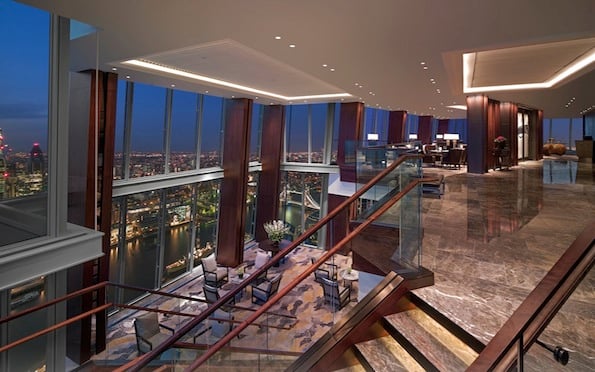 So has Shangri-La, the Hong Kong-based hotel conglomerate with 82 properties, mainly in China and the Far East, risen to the challenge of nesting in Renzo Piano’s scintillating glass sliver, with its ever-decreasing floor space and its sloping structural pillars? No named designers are credited with the look, and, indeed, the look is standardised and I fervently wish these extraordinary spaces had been in more creative hands. Only think what André Balazs or Ian Schrager might have done with them, producing a natural hub instead of this sterile virtual world.
So has Shangri-La, the Hong Kong-based hotel conglomerate with 82 properties, mainly in China and the Far East, risen to the challenge of nesting in Renzo Piano’s scintillating glass sliver, with its ever-decreasing floor space and its sloping structural pillars? No named designers are credited with the look, and, indeed, the look is standardised and I fervently wish these extraordinary spaces had been in more creative hands. Only think what André Balazs or Ian Schrager might have done with them, producing a natural hub instead of this sterile virtual world. 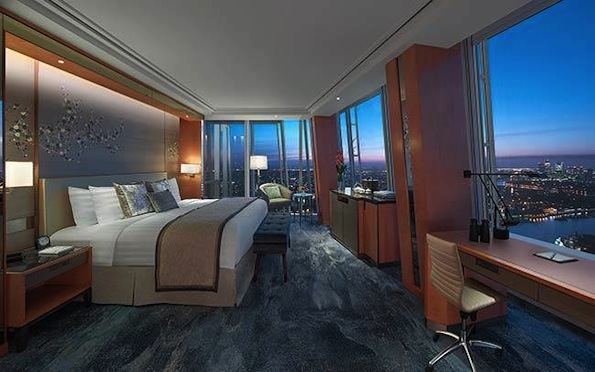 The bedrooms and suites (59 are currently open, with another 202 still to come) are priced by aspect. Of the bedrooms, the cheapest, at £450, buys you southerly views; the most expensive, at £600, buys you triple-aspect, 180-degree views of all the great landmarks – worth the extra, I think. My room, on the 47th floor, is one of those. There’s a soft toy squirrel next to the bed (why?), and a Chinese lady wearing disposable hygiene gloves brings a pot of “welcome tea” in what looks like a hat box. The decoration, as in all the rooms, is more of the same Singapore Bland. As night falls, the room becomes a ghostly mosaic of reflections, both of my own room and the room next door. At least I was forewarned about this unexpected design fault – caused by the glass wings that sprout from each corner of the building – that has robbed some rooms of their privacy. The hotel is “working on the problem”, needless to say.
The bedrooms and suites (59 are currently open, with another 202 still to come) are priced by aspect. Of the bedrooms, the cheapest, at £450, buys you southerly views; the most expensive, at £600, buys you triple-aspect, 180-degree views of all the great landmarks – worth the extra, I think. My room, on the 47th floor, is one of those. There’s a soft toy squirrel next to the bed (why?), and a Chinese lady wearing disposable hygiene gloves brings a pot of “welcome tea” in what looks like a hat box. The decoration, as in all the rooms, is more of the same Singapore Bland. As night falls, the room becomes a ghostly mosaic of reflections, both of my own room and the room next door. At least I was forewarned about this unexpected design fault – caused by the glass wings that sprout from each corner of the building – that has robbed some rooms of their privacy. The hotel is “working on the problem”, needless to say. 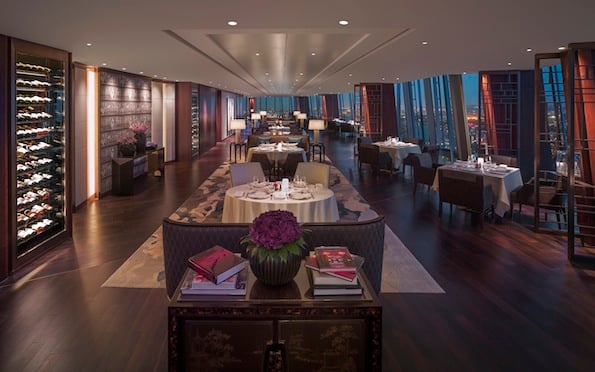
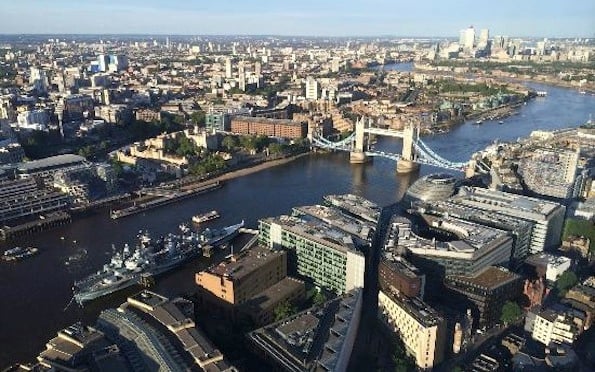 When I wake, I think it must be still dark outside. I press the button and the blackout blinds rise. Kerpow! It’s the most beautiful day and I am floating in a glass capsule above London, the London of today, spread out before me. Never mind the Shard’s shortcomings – you cannot miss this sight.
When I wake, I think it must be still dark outside. I press the button and the blackout blinds rise. Kerpow! It’s the most beautiful day and I am floating in a glass capsule above London, the London of today, spread out before me. Never mind the Shard’s shortcomings – you cannot miss this sight.
Further information, Shangri-la at the Shard
Fiona Duncan is one of the UK’s leading hotel experts. She writes a weekly column for The Sunday Telegraph and is the author of several hotel guides. You can read a longer version of this review at Telegraph Travel. Follow Fiona Duncan on Twitter @hotelguruguru












